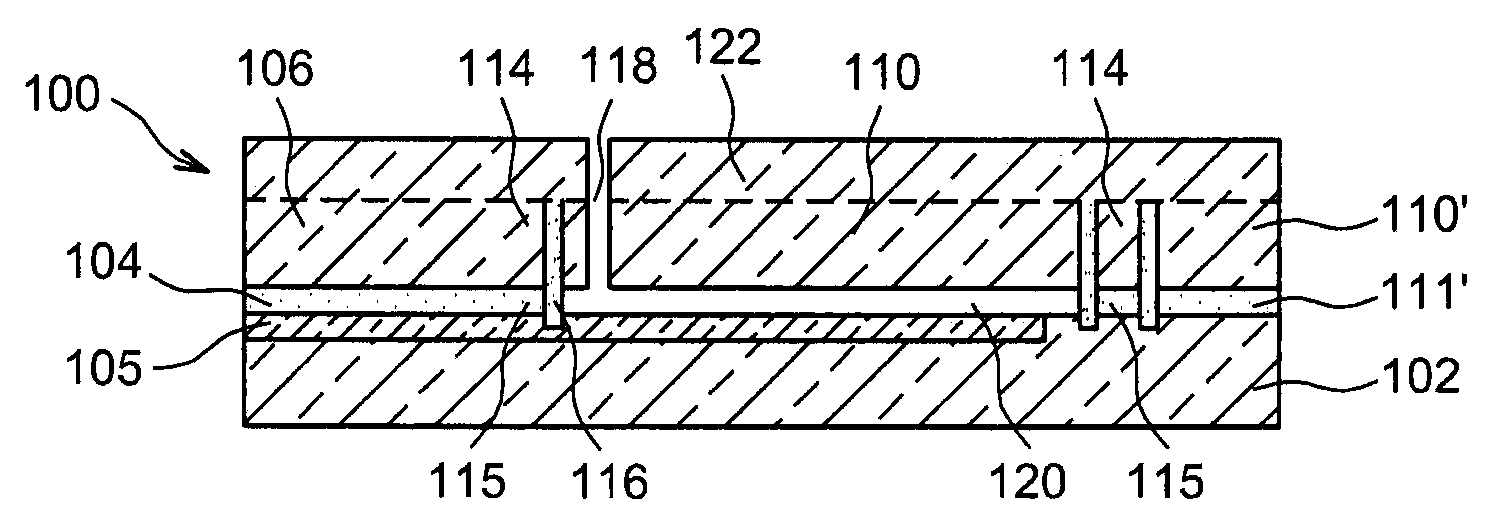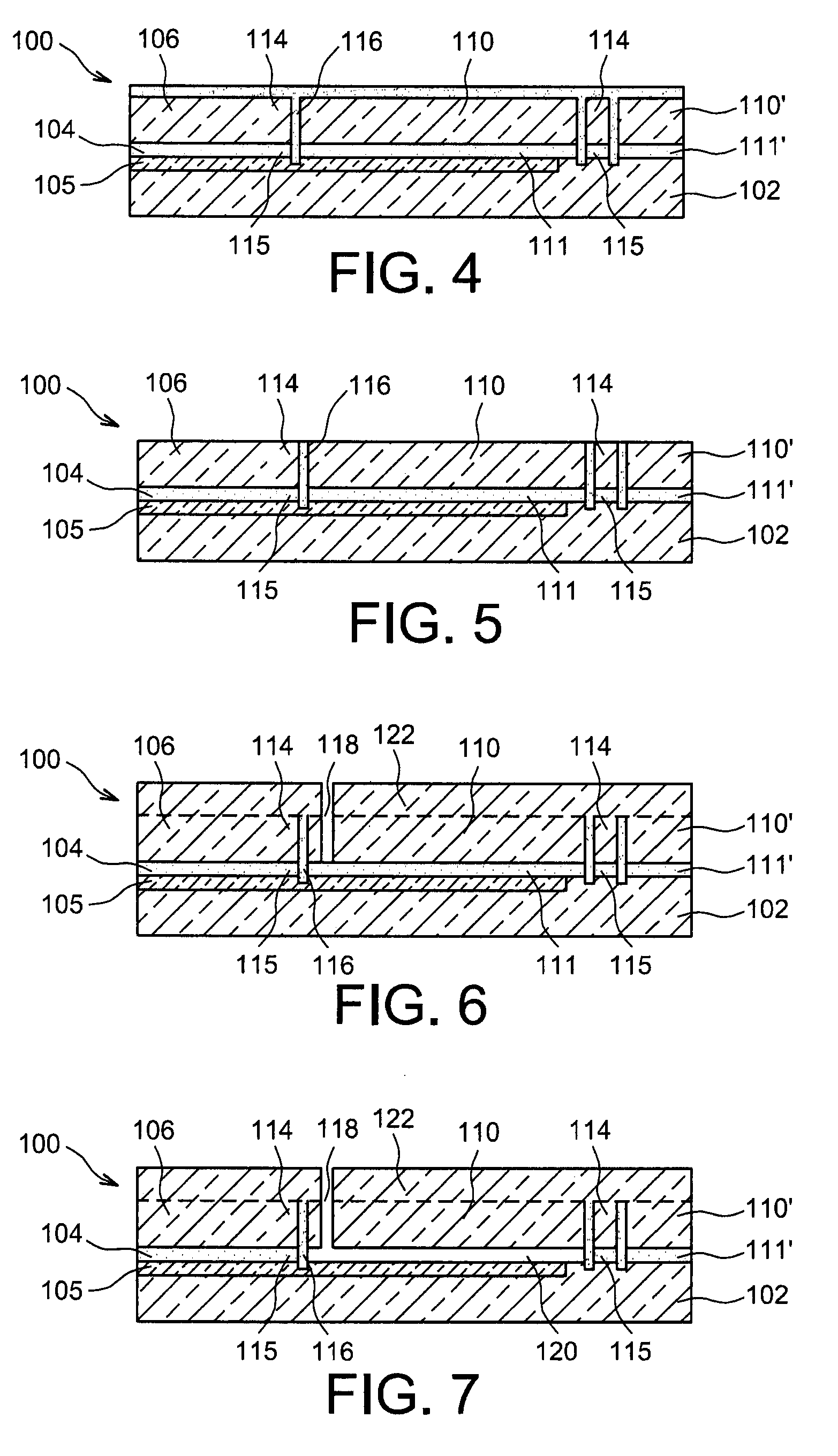Method of producing a suspended membrane device
a technology of suspended membrane and production method, which is applied in the field of method of producing suspended membrane devices, microsensors, etc., can solve the problems of not being able to obtain a precise characterisation of the dimensions of the structure produced, and the inability to use time as a dimensional control parameter for the suspended structure produced, so as to reduce the degradation of mechanical properties of the suspended structure and improve the attachment of the structure produced. , the effect of improving the precision
- Summary
- Abstract
- Description
- Claims
- Application Information
AI Technical Summary
Benefits of technology
Problems solved by technology
Method used
Image
Examples
first embodiment
[0046]Reference is first made to FIGS. 1 to 7, which show the steps of a method for producing a suspended membrane device 100 according to a
[0047]The device 100 is produced from semiconductor-based substrate 102 such as silicon, upon which are stacked a dielectric layer 104, e.g., containing SiO2 and forming a sacrificial layer having a thickness equal to approximately 1 μm, or more generally between approximately 0.1 μm and 3 μm, and a thin layer 106 containing a semiconductor material, e.g., monocrystalline silicon. In an alternative, layer 106 may contain a semiconductor material other than silicon, e.g., such as SiC (silicon carbide) or a piezoelectric material such as LiNbO3 (lithium niobate) or BaTiO3 (barium titanate). In this case, the semiconductor layer 106 has a thickness of less than approximately 10 μm, or of between approximately 0.1 μm and several tens of micrometres, or less than approximately 100 μm. In this first embodiment, the substrate 102, the sacrificial layer...
third embodiment
[0087]As shown in FIG. 34, the portion 311 of the sacrificial layer 304 defined by the trench 308 is then etched. In this third embodiment, it is the epitaxially grown material 312, in this case silicon, which forms the etch stop material. This etching may be carried out with an HF-based aqueous solution.
second embodiment
[0088]As in the second embodiment, the opening 314 is plugged by depositing and etching a material 316 such as phosphosilicate glass (PSG) (FIG. 35). Creep may then be produced by PSG annealing at a temperature greater than 1000° C.
[0089]Ion implantation is then carried out, forming piezoelectric gauges 318 in the epitaxially grown layer 312 (FIG. 36). The device 300 is then passivated by depositing a passivation layer 320 (FIG. 37).
[0090]Contact holes 322 are then made in the passivation layer 320, in the vicinity of the gauges 318 (FIG. 38).
[0091]The device 300 is then completed by making metal interconnecting tracks 324, as shown in FIG. 39, which come into contact with the gauges 318.
[0092]In the three embodiments described, each trench defining a portion of the semiconductor layer intended to form a suspended membrane of the device is entirely filled with the etch stop material intended for stopping the etching of a sacrificial material. In an alternative of these three embodim...
PUM
 Login to View More
Login to View More Abstract
- producing a trench through a first sacrificial layer and a second layer deposited on the first sacrificial layer, the trench completely surrounding at least a portion of the first sacrificial layer and at least a portion of the second layer,
- filling all or a portion of the trench with at least one material capable of resisting at least one etching agent,
- etching said portion of the first sacrificial layer with said etching agent through at least one opening made in the second layer,
- said portion of the second layer forming at least one portion of the suspended membrane.
Description
Claims
Application Information
 Login to View More
Login to View More - R&D
- Intellectual Property
- Life Sciences
- Materials
- Tech Scout
- Unparalleled Data Quality
- Higher Quality Content
- 60% Fewer Hallucinations
Browse by: Latest US Patents, China's latest patents, Technical Efficacy Thesaurus, Application Domain, Technology Topic, Popular Technical Reports.
© 2025 PatSnap. All rights reserved.Legal|Privacy policy|Modern Slavery Act Transparency Statement|Sitemap|About US| Contact US: help@patsnap.com



